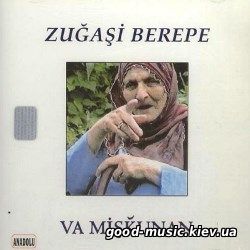санди
Статья с ресурса ქართული მუსიკის შესახებ:
More than 1,5 million Laz and their culture bore the influence of the government’s assimilatory policies for many centuries. Expression of their national identity had never been very welcome, and their history and culture is very scarcely studied officially. Laz folklore is still developing the way it did in the past centuries – esoterically, with word-of-mouth retelling throughout generations, with original forms commonly distorted due to so multiple outside influences.
However, the 90s saw the rise of many Laz culture activists, who started the formation process of Laz regional musical identity that was very distinct from Turkish musical mainstream. Birol Topaloğlu (Topalishi) presented Laz music as ethno-jazz close to original folkloric shape. Bayar Şahin (Gundaridze) is well-known to Georgians with his instant melodic appeal. Still, the musical approach of Kazim Koyuncu was the one that originally took over Turkey’s heart massively and popularized Laz music the most. Before he started his short, untimely halted but very productive solo-career, he was a member of a number of rock bands – of which “Zuğaşi Berepe” (Laz for “Sons Of The Sea”) comes as the most important, with whom he recorded two very interesting studio (“Va Mişkunan” and “Izgas”) and one live (“Bruxel-Live”) album. They perhaps represent the primal exponents of Laz and rock music synthesis.
The band’s debut album which, with one exception, is fully sung in Laz language, combines folk music with at moments very energetic progressive rock. The opening “Avlaskani Cuneli” [1] is especially impressive where cyclic Khorumi groove is augmented with nasty, garage guitar riffs and very beautiful, dynamic bagpipe passages. “Ernesto” [6] is also a rhythmic song with a lovely, melancholic melody. “Berertaşa” [4] and “Oxoşkva Do Oropa Şeni” [8] feature both atmospheric and hard rocking parts employing the inventive bass guitar parts as a tight bridge. Other songs are a bit slower in pace, and much like Britain’s Mostly Autumn here the folk instruments are juxtaposed with Pink Floyd-ish spacey atmosphere, but in contrast with the British, Gilmour-esque guitar is dropped in favour of a still melodic, but much rougher sound.
Everything about this album, the imperative old women on the artwork, album name (Laz for “We Don’t Know”) and its melancholic tone, rough, non-refined sound and archaic bagpipe together create a charismatic picture, that for many of us may be the first ever window to Laz’ rich, strange and problematic culture that has not appropriately been studied to the present day. This work also showcase the interesting differences between Laz and Megrelian (to whom they are most closely related) folkloric melodism. And considering the big historic importance of Va Mişkunan”, I’d rate this album as 9/10. Recommended to everybody interested in Georgian music, especially folklore.
P.S. Cassette and CD versions of the album are a bit different. On CD, chanting intros to some songs have been abridged, so I’m offering the cassette version.
 Style: Folk Rock
Style: Folk Rock